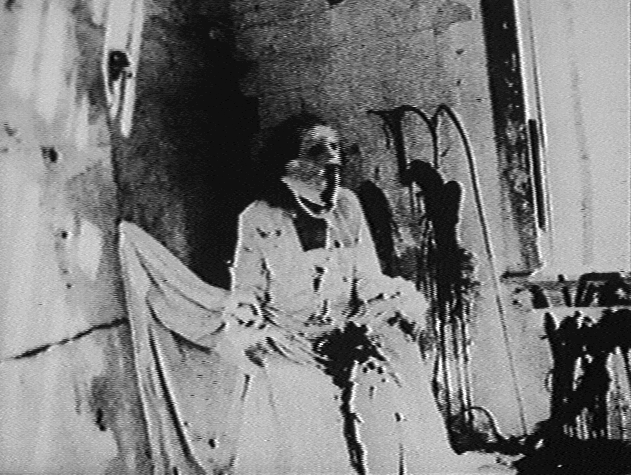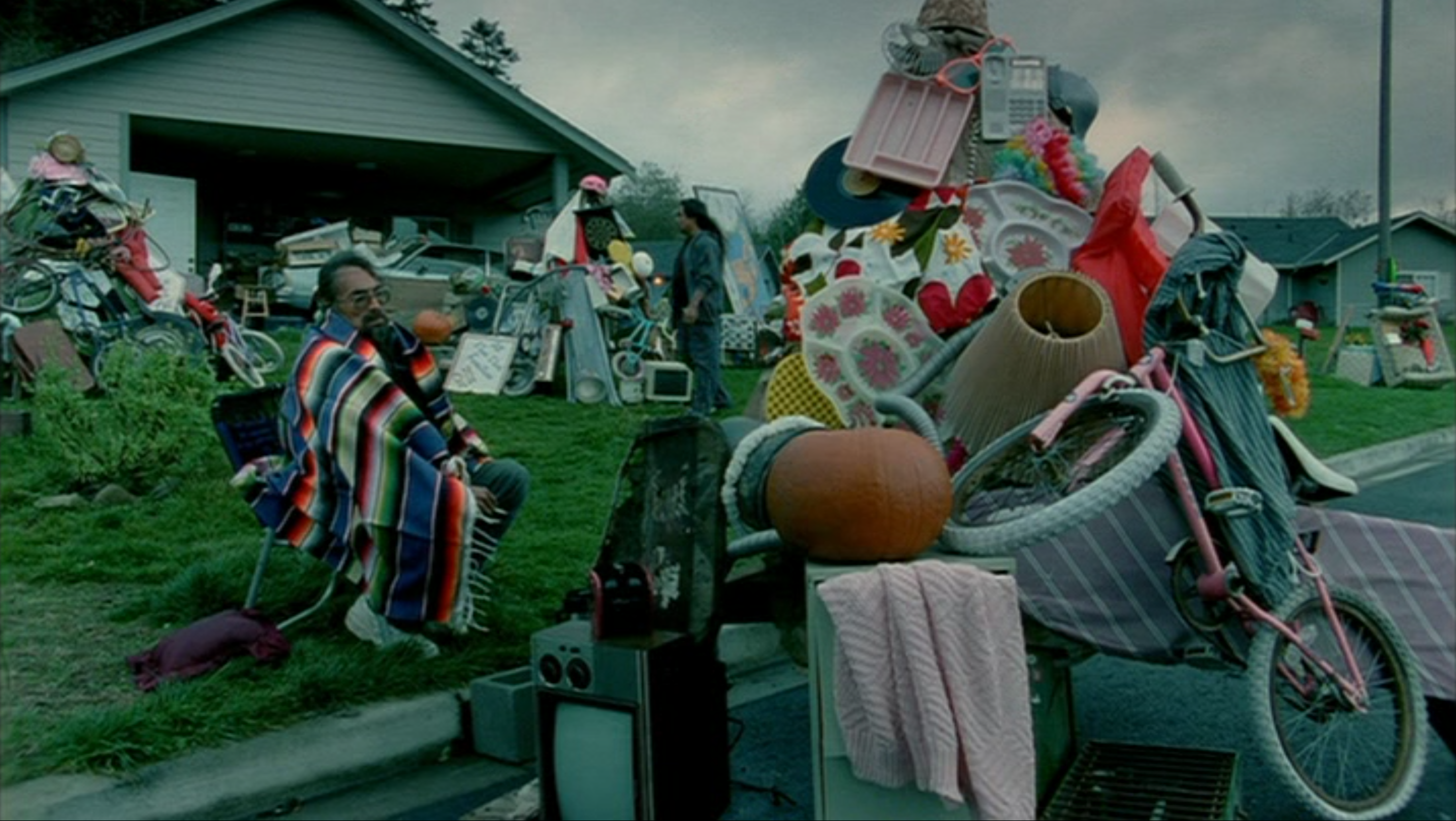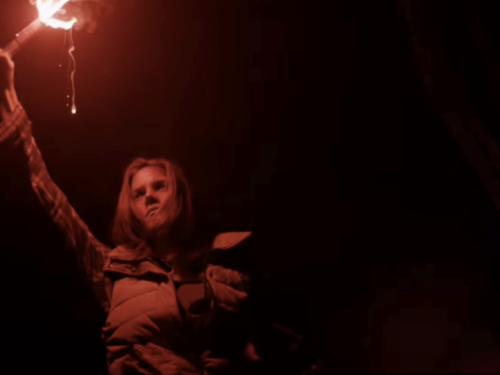While it may look like it was beamed in from another universe, Begotten emanates a deeply human yearning to explore the darkest shadows of humanity’s origins
“I see [horror] as this courageous nauseousness that one needs to have to really look at life in its deepest kind of well and not skim over the surface of things — which we normally do in our day-to-day lives… [It’s] an exploration of our inability to fully wrap our heads around the deeper nature of nature itself and this, for me, is where the center, the heart of horror begins to pulse and emanate from.”
— E. Elias Merhige
E. Elias Merhige’s Begotten (1990) scares many people away before they even know what it is. This doesn’t mean that they avoid watching it; rather, it’s more an issue of how they watch it. Certainly, there is no shortage of mystery surrounding the film. For many, their first encounter with Begotten is in the physical form of a beat up VHS tape or out-of-print DVD — that notorious, distorted black-and-white portrait of a masked, white-robed figure seated with a lap full of blood and guts cover image catching their eye in a video store, or more likely now on some cult film blog. On first impression it looks like an extreme torture-horror film, until you notice the praise-heaping pull-quote from Susan Sontag on the back cover calling it “one of the ten most important films of modern times.” To say the least, the film’s reputation can be confusing.
More October Horror: Last House on Dead End Street (Roger Watkins, 1977) by Brett Wright
Begotten is a film of extremes; viewers often respond in a like manner. Countless reviews show the common tendency for people to regard it as a singularly “weird,” “disturbing” or “pretentious” artifact. It is often wrongly referred to as “outsider art” or accused of being an impenetrable, avant-garde ego trip. Many seek out Begotten expecting a straight-up horror film, or some bizarro midnight movie, only to find themselves confounded by the violent imagery and extended scenes built of repetitive, dance-like motions flickering across the screen.
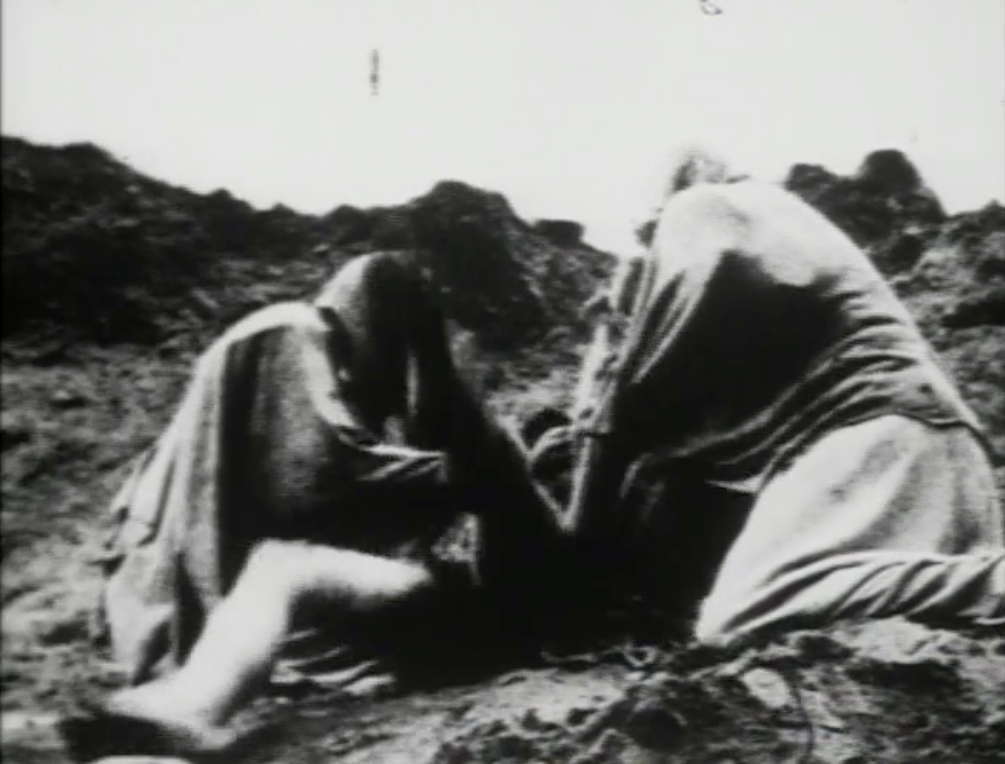
The truth is that Begotten suffers from attempts to pin it down within clearly defined categories. Such graspings for relatability to the known world are of course the easiest way to reassure oneself when faced with such an outlandish work of art, but these attempts won’t take you very far when actually experiencing the film. Begotten is a film best experienced with its mystery left intact. While it may look like it was beamed in from another universe, it emanates a deeply human yearning waged by artists to explore the darkest shadows of humanity’s origins. Viewers are better off bravely giving in to the radical style of the film and letting it tell them how to follow its strange path through the unknown.
Begotten brings the Cosmos and Creation into bodily form. There is a narrative, but it functions closer to the way dance uses story or plot; its faint outline is there in service of the movements and rhythms of the images. Merhige offers a brief epigraph for guidance:
“Like a flame burning away the darkness
Life is flesh on bone convulsing above the ground”
There are three principal characters: God Killing Himself (Brian Salzberg), Mother Earth (Donna Dempsey) and Son of Earth — Flesh on Bone (Stephen Charles Barry). The rest of the cast is made of members of the avant-garde acting troupe Theatre of Material, who appear as cloaked Druidic figures. The film begins with God Killing Himself living up to his name, sitting in a chair in a dilapidated house stabbing himself mercilessly. Upon his death, Mother Earth appears, impregnates herself with God’s seed and bears a son, who for the rest of the film is dragged and brutalized across barren landscapes by the cloaked figures. He writhes around in the soil, regurgitates his innards and toils helplessly while Mother Earth is raped and killed.
The film is disturbing, but not in an exploitative “gross-out” way. In fact, it is uncommonly beautiful once you catch onto its rhythms. Violence is prolonged and graphic, but never done to shock. God Killing Himself does so by hacking away at his torso with a straight razor while seizing in his chair, but the film is clearly more interested in the gestural and rhythmic qualities. Merhige is shifting our attention from the gore and violence to the flickering rhythms of the editing and the skittering movements of the knife stabbing at flesh. The film accentuates the arduousness of the motions.
More October Horror: The Manhattan Love Suicides (Richard Kern, 1985) by Brett Wright
Attempts to narrativize the film — as if it were traditional storytelling — will most certainly lead to dead ends. The film explores similar territory to an H.P. Lovecraft story, but where Lovecraft’s unfathomable mysteries of the Cosmos take form in glimpses of ancient monsters or supernatural phenomena as witnessed by scientists or professors, Merhige’s film makes us the witness, evoking unclassifiable horrors through gesture and the alien texture of the images themselves. With the absence of traditional storytelling, this film is often considered “pretentious” by casual viewers, as if it is merely trying to alienate its audience. If it works to keep us at a distance, it is ultimately an effort to draw us further in. I find myself drawn to those shots of twitching hands and bodies squirming in the soil. In a scene of Flesh on Bone being dressed in a frock before being lifted up a steep hill by the cloaked figures, it is the pronounced sound of the thick, fluttering cloth I remember. The effect is like slow motion; the jittery visuals and the sound design pulling the action out of a relatable time and place, making all the power of the atmosphere felt within the fabric of the garment being forced upon the struggling being.
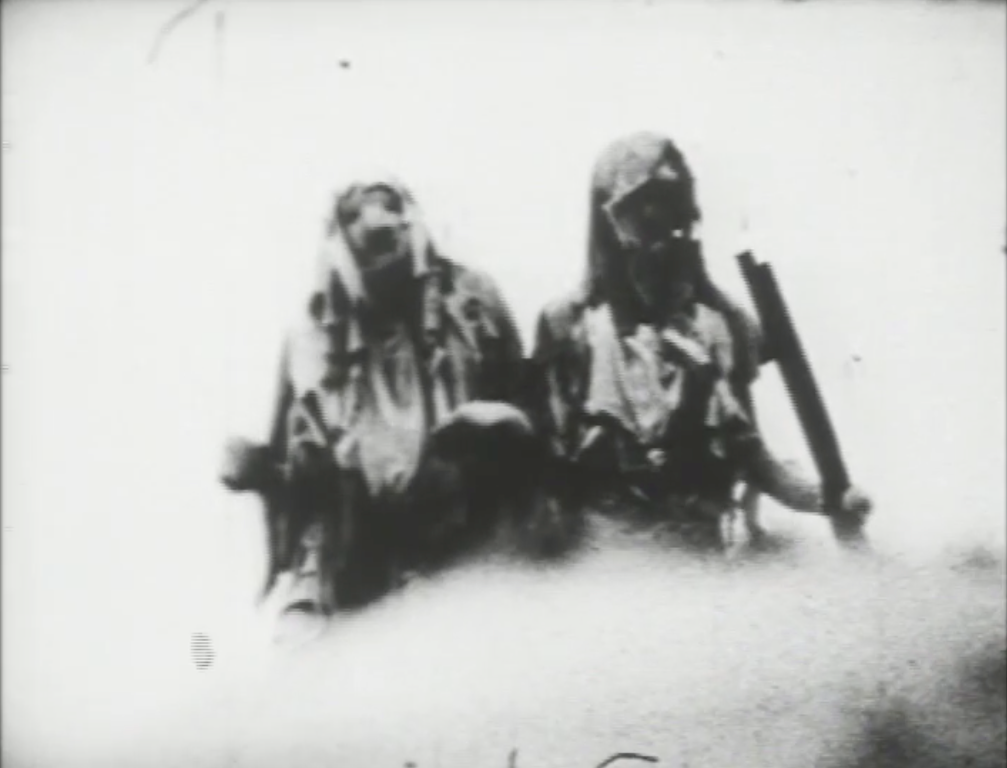
So often creation myths feel abstracted or romanticized, sterilized through the epicness of their scope. To see it expressed in this film through bodies in such stark and often brutal ways is devastating. Begotten explores truths normally masked by creation’s darkness, like shining a light under a rock buried for centuries and recording the skittering dance of the lifeforms dwelling underneath. This is Cosmic Horror filmmaking enacted in human proportions. Rebirth comes violently and at the cost of the body; spirit shows in the creation that comes after the suffering and primitive turmoil.
Stay up to date with all things Split Tooth Media and follow Brett on Twitter and Letterboxd
Find the complete October Horror Archive here:
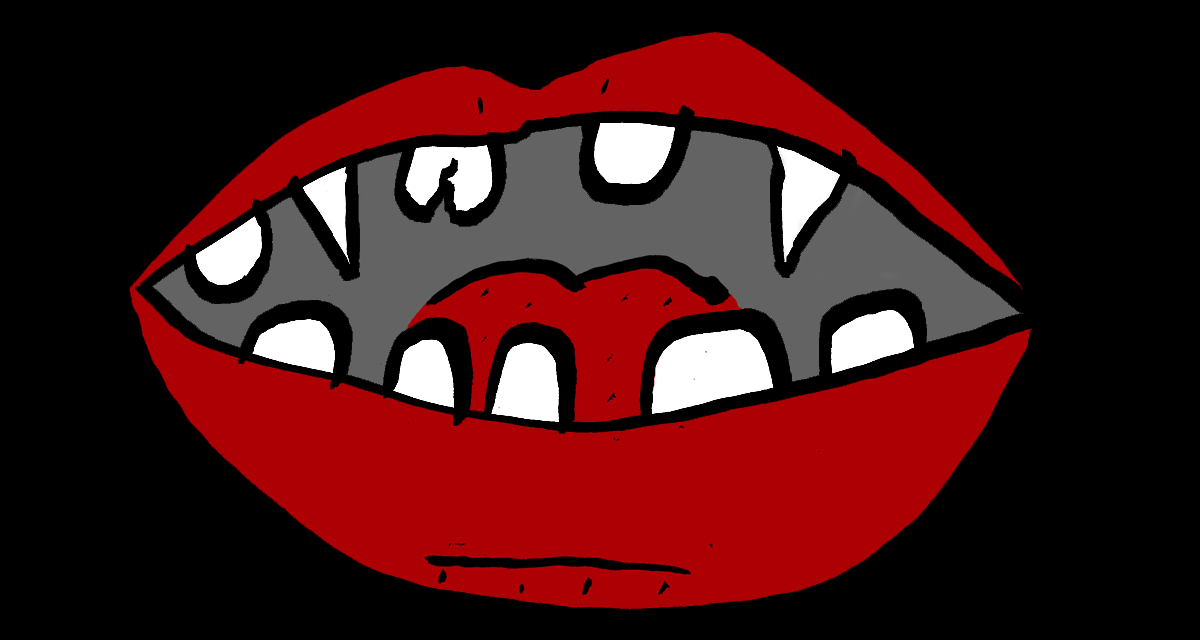
(Split Tooth may earn a commission from purchases made through affiliate links on our site.)

